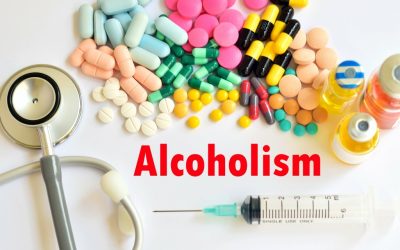We have over the years seen a growing trend in a number of young people who are involved in alcohol and substance abuse. Underage drinking has been a growing problem, especially with the increase in “pens ’down parties” which are held by pupils to celebrate after writing their exams. Syringe service programs provide harm reduction services to people who use drugs.
Alcohol Misuse
You and your community can take steps to improve everyone’s health and quality of life. Excessive alcohol use is a term used to describe four ways that people drink alcohol that can negatively impact health. Cirrhosis leads to an inability to process hormones and toxins and increased estrogen levels. The skin of a patient with alcoholic cirrhosis can feature spider angiomas, palmar erythema, and — in acute liver failure — jaundice and ascites. The derangements of the endocrine system may lead to the enlargement of the male breasts. The inability to process toxic metabolites such as ammonia in alcoholic cirrhosis may lead to hepatic encephalopathy.
- If you are drinking more than that at any one time, you may be misusing alcohol.
- For men, heavy drinking means more than four drinks on any day or more than 14 drinks a week.
- Heavy alcohol use raises the risk for fractures and even low levels of alcohol intake increase the odds for recurrent gout attacks.
Treatments Led by Health Care Providers
- Don’t try to make the person vomit because they could choke on it.
- This type of intensive treatment is usually reserved for people with medium or high levels of alcohol dependence, and those who have received other forms of help previously that have not been successful.
- Your health care provider or counselor can suggest a support group.
After completing treatment for AUD, it’s possible to have a risk of relapse. It’s important to recognize warning signs and seek help if you’re concerned about having a relapse. If you are drinking more than that at any one time, you may be misusing alcohol. Excessive drinking is defined as 15 drinks or more a week for men and eight drinks or more a week for women.
However, researchers haven’t known whether the neuronal ensembles activated during binge drinking also influence binge drinking behavior. Not everyone shows outward signs of ethanol addiction, and this is often especially true in the early stages. The addiction sufferer may have trouble noticing these symptoms if they remain in a phase of self-denial or have trouble admitting the problem to other people. Alcohol withdrawal syndrome is a set of symptoms that people can have when they stop drinking. The pancreas is an organ that makes substances that support bodily functions including digestion and metabolism.

Physical complications of alcohol use disorder
The whole body is affected by alcohol use–not just the liver, but also the brain, gut, pancreas, lungs, cardiovascular system, immune system, and more. As a loved one of someone with an alcohol addiction, try to be encouraging and provide emotional support. Therapy is useful to help teach someone how to manage the stress of recovery and the skills needed to prevent a relapse. Also, a healthy diet can help undo damage alcohol may have done to the person’s health, like weight gain or loss. If AUD is not treated, it can increase your risk for serious health problems.
The Healthline FindCare tool can provide options in your area if you need help finding a mental health specialist. Many people addicted to alcohol also turn to 12-step programs like Alcoholics Anonymous (AA). There are also other support groups that don’t follow the 12-step model, such as SMART Recovery and Sober Recovery. If you’re worried that someone you know has an alcohol addiction, it’s best to approach them in a supportive way. This could push them Drug rehabilitation away and make them more resistant to your help.
Ask a GP or alcohol service about what longer-term support is available in your area. The GP may suggest different types of assessment and support options available to you, such as from local community alcohol services. Ethanol, sometimes referred to as ethyl alcohol, is a form of alcohol that is widely used in the production of food additives, antiseptics, industrial chemicals, and as a component in gasoline. It is also the primary ingredient in various types of alcohol, including beer, wine, and hard liquor.
Behavioral Changes
Alcohol-related problems—which result from drinking too much, too fast, or too often—are among the most significant public health issues in the United States. Awareness of the definition and who is at risk for developing AUD can help people make better decisions about their use of alcohol. People should also note that those with AUD may already be dehydrated, and further dehydration due to exercise may place people at an increased risk of seizures. Additionally, alcohol may cause inflammation in the gastrointestinal tract. This can impair absorption of essential nutrients, particularly vitamin B1 (thiamine). Thiamine supplements can help restore proper levels in the body.
When is it common in society, it can be hard to tell the difference between someone who likes to have a few drinks now and then and someone with a real problem. It can be hard to see there is a problem even if the drinking is negatively impacting your health and your life. If you have a concern that you have AUD, you can see a health professional for consultation.
Ethanol Abuse: Symptoms and Effects of EtOH Addiction

Chronic pancreatitis is a risk factor for the development of pancreatic cancer and diabetes. A doctor may order additional tests to find out whether alcohol-related damage to the liver, stomach or other organs has occurred. A healthy diet with vitamin supplements, especially B vitamins, is helpful. It is never easy for family members and friends to talk about a drinking problem.
The stress, the social perceptions of these issues may reinforce abusive drinking habits. Ethanol abuse can escalate to a physical and/or mental addiction. When a person is addicted to ethanol, they consume many alcoholic beverages despite negative consequences. People addicted to alcohol often use the substance as a form of self-medication when they have issues with their mental health. Cognitive-behavioral therapy (CBT) has been well-studied as ethanol abuse a treatment for alcohol use disorder. Other types of treatment that can be helpful for treating ETOH abuse and co-occurring mental health conditions include motivational enhancement therapy, family therapy, and brief interventions.
Access to sterile syringes has helped reduce the number of new HIV cases among injection drug users by 95% in the last 20 years. Using sterile equipment also protects injection drug users from Hepatitis C and infections at the injection site. Learn about the services and resources below to help keep your community safe.

